It is no surprise that indoor plants are good for us! But have you ever considered their benefits?
Or, how do indoor plants make your home life healthier and happier?
One of the benefits of indoor plants, proven in a study, showed that employee productivity increased (up to 15%) after introducing indoor plants to an office. Also, it reduces their stress level and boosts their mood.
Likewise, I have 16 reasons for having more indoor plants in your home right here! So, keep reading to know the top 16 benefits of indoor plants,

1. You will breathe better air
According to research, indoor plants can reduce indoor pollutants and toxins such as formaldehyde and benzene.
One study found that the bromeliad plant removed eight volatile organic compounds (out of eight studied) in 12 hours. In contrast, the dracaena plant removed 95% of acetone (the compound found in nail polish removers).
According to Gary L. Altman, CRC, HTR, associate director of the Horticultural Therapy Program at Rutgers University, “The air-purifying abilities of plants vary depending on the size of the plant, the size of the indoor space, and the amount of toxin in the air, but 6 to 8 medium-sized to large plants throughout a large room should make a noticeable difference in air quality.”
For plants to perform at their best, keep leaves free of dust and give them natural sunlight periodically.
2. Enhance your room

Indoor Plants don’t just add colour and liveliness to your home, they also transform the physical space in pleasant ways. In addition to increasing room humidity, plants can shield unsightly areas and moderate room temperature.
It would be best if you gave some thought to the vibe you want in a room before putting furniture and accessories in it. Plants might be an excellent way to enhance that feeling.
3. Boost your mental well-being
Indoor plants can also do wonders for your mental health. In one study, patients at a heart and lung rehabilitation centre in Norway reported a higher level of well-being four weeks after 28 new plants were introduced, compared to those who didn’t have greenery.
John Beirne, HTR, horticultural therapy instructor at the New York Botanical Garden and superintendent of horticulture at Willow wood Arboretum, says trees and plants are part of our evolutionary heritage.
They have fed our bodies and souls for millennia, so it should be no surprise that they make us feel at home.
4. Gives you a sense of accomplishment
Another study found that residents in an assisted-living facility enjoyed potted plants and learned to care for them at home when they potted them. Scientists say it might be due to a feeling of accomplishment or companionship with the plants (some say they talk and sing to them).
Gwenn Fried, manager of Horticulture Therapy at NYU Langone’s Rusk Rehabilitation, says that when someone takes ownership of something, they take pride in their accomplishment. I have found that anyone who plants something will take better care of it and nurture it.
Nurturing is a fundamental part of a person’s experience and is filled with joy. So, go ahead and get an indoor plant for your living room.
5. You will be stress-free
When you plant plants and actively maintain them, you can forget disturbing, stressful things that may be going on in your life and focus on the here-and-now.
This is helpful to you and your psychological well-being. Additionally, indoor plants enjoy this care, grow better, and are better equipped to provide physical benefits.
If you are a new parent to indoor plants, start with succulents if you have a window that receives a lot of light or philodendrons for the average room with moderate light.
In case you are unsuccessful with an indoor plant the first time and it dies, that’s ok; try again. Because the best gardeners and horticulturalists learn from their mistakes. Moreover, with every growing mistake made, a lesson will be learned.
6. It will increase your productivity
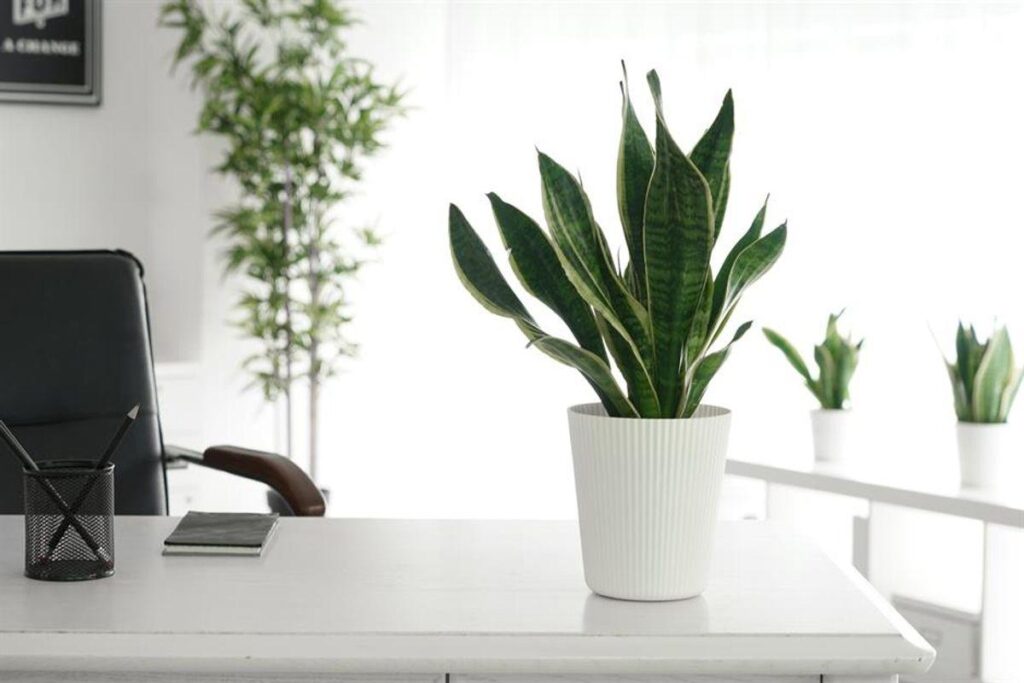
Ever wondered if that succulent plant sitting on your co-worker’s desk might be giving her a brain boost at work?
It is proven that employee productivity increased by 15% after indoor plants were introduced to an office.
It is true that plants were once and still are essential for human survival. Today, this connection can be observed by an overall reduction of stress and an increase in calmness and well-being.
Additionally, this affects an individual’s ability and enables them to focus more on the task.
An article published in the Journal of Environment Psychology found that college students who completed cognitive tasks in an office with indoor plants had a longer attention span than those in an office with no plants.
7. They will heal you

Another benefit of indoor plants is that your close relationship with indoor plants helps you to recover from illness or injury.
When you surround yourself with indoor plants, you can create a sort of natural, living sanctuary in which you feel safe and protected.
Also, it is found in the study that patients with indoor plants required less pain medication and had low blood pressure and heart rate. Additionally, they felt less anxiety and fatigue while recovering from surgery than patients without greenery in their rooms.
Some indoor plants even provide physical healing benefits. For example, aloe vera can heal sunburn and other skin irritations.
8. Enhance therapeutic care
With the help of a horticultural therapist, a person can benefit from the growth and care of indoor plants as a part of their formal recovery process.
Horticulture therapy is an organized method of regaining health and wellness through plant-based activities. It is a type of care involving professionals who create measurable goals for the patient to reach.
As a result, the person will be able to overcome problems, difficulties, or obstacles identified by the treatment team.
As per the American Horticultural Therapy Association, this modality can be used to treat psychological issues (such as post-traumatic stress disorder), physical issues (like regaining lost skills), or even vocational struggles (problem-solving, for instance).
Consider how much they give you in return next time you get frustrated with watering them!
9. Reduce lower background noise
You must have noticed plants near the busy roadside to reduce noise. Research has shown another benefit of indoor plants: they help reduce background noise levels inside your building or house.
Plant and their leaves absorb, diffract, or reflect background noise. Thus, this benefit of the indoor plants makes the environment more comfortable for the occupants.
Moreover, a postgraduate student in London, Peter Costa, found that some plants are particularly good at absorbing high frequencies.
Indoor plants absorb sound better in acoustically live spaces, for instance, those that gesture on hard surfaces.
10. Gazing at indoor plants improves your concentration and attention span
Indoor plants benefit individuals on their journey to psychological restoration. When you perform regular tasks, your psychological and physiological resources are depleted.
They go a long way towards replenishing these resources. Moreover, connecting with indoor plants improves your concentration and attention. Also, they help relieve negative moods associated with your stress.
And the good thing is you do not have to do anything to reap the benefit of indoor plants.
In this process, indoor plants are seen as features of the indoor environment that attract your attention without an effort and evoke positive emotions in you that respectively promote a renewal of the capacity to concentrate and interrupt your stress process.
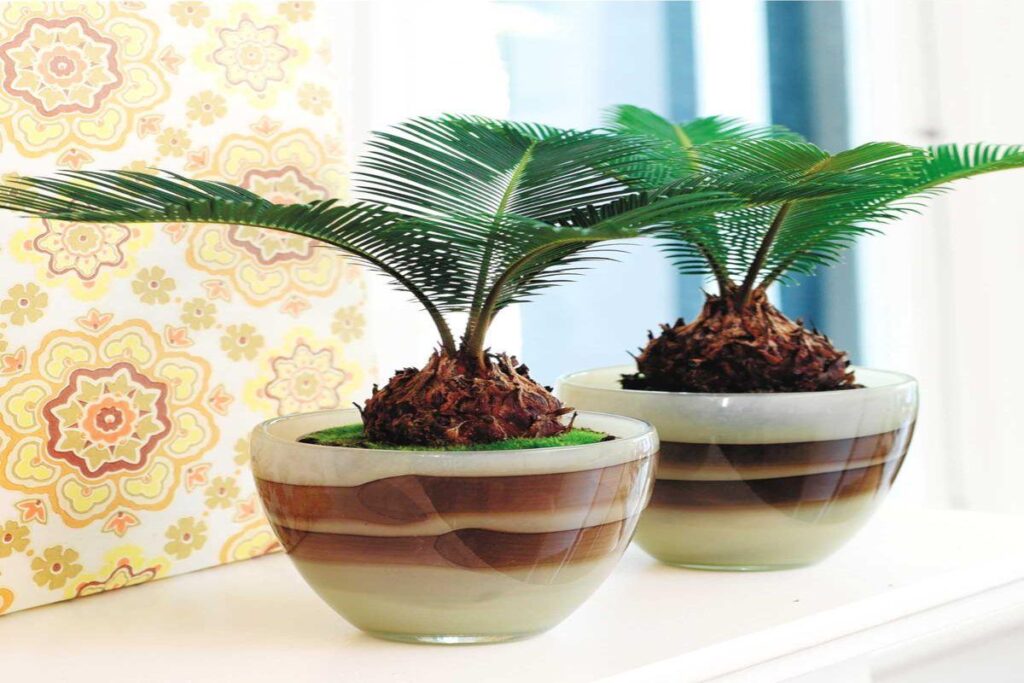
An unusual indoor plant such as the Sago Palm tree is helpful to distract you from stress and hold your attention.
11. Encourages your creativity
Unsurprisingly, negative psychological effects such as bad moods or stress would dampen your creativity. So, with these benefits of indoor plants, your imagination is also improved by indoor plants or other natural elements you incorporate into your home.
While you can reap these benefits of indoor plants by keeping a fresh vase of flowers on your desk, you could add a versatile fern plant to your creative space instead.
12. Combat sick building syndrome
There is much research that highlights the importance of getting out to enjoy nature. However, this is not quite as easy as it seems.
You nearly spend 85%-90% time indoors. And when there is hot summer or rainy out, there is even more incentive to skip out on a stroll. Instead, you opt for a hygge afternoon at home.
However, it is not just a bummer if you are trying to opt outside more often. It is also bad for your health.
Everything from your home, such as carpeting, paint, and drywall, to your office’s copy machine, releases contaminants into the air. And with a lack of ventilation, artificial lighting, and everyday stresses, you have several factors for sick building syndrome.
This condition affects people who spend too much time inside, resulting in ailments like headaches, skin and sinus irritations, nausea, and fatigue.
So how can you tackle this problem?
Bring indoor plants!
Just like walking past trees and greenery outside, interacting with indoor plants reduce stress and anxiety. In addition, they have the bonus of helping to purify the air.
Common daisies, chrysanthemums, and other common indoor plants can remove as much as 90% of certain toxins from the air in just 24 hours.

13. Indoor Plants combat cigarette smoke
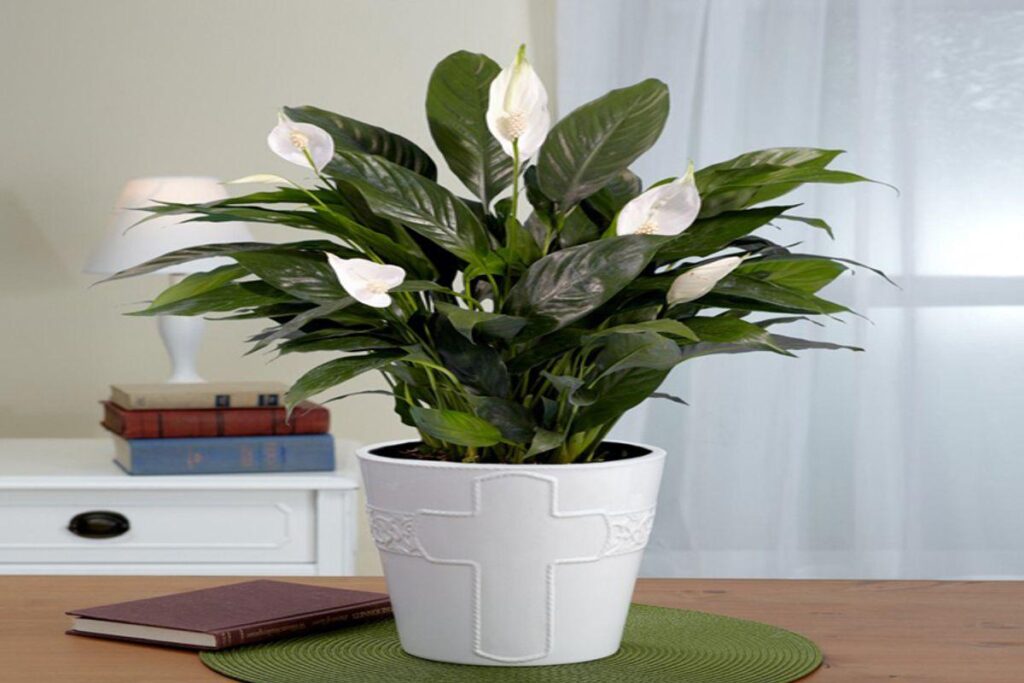
Do you have a smoker at your home?
Indoor plants filter toxins that are in cigarette smoke. These plants can effectively and naturally eliminate cigarette smoke odours and pollutants. In this case, the Spathiphyllum plant, or Peace Lily, is an excellent choice.
14. Prevent allergies
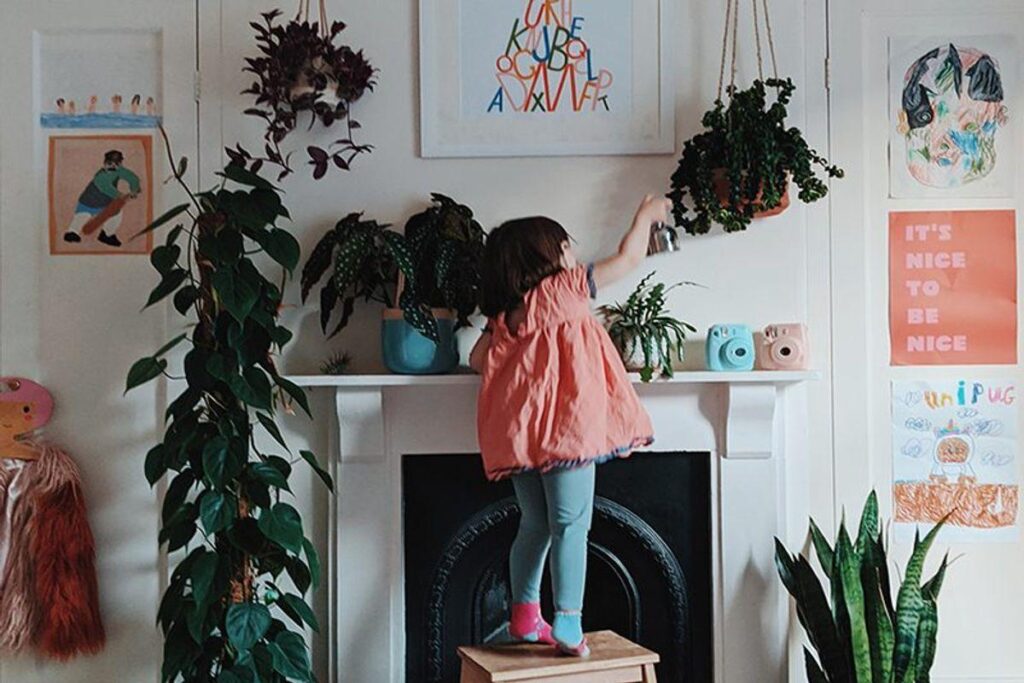
If you have young children at your home, indoor plants are an extra consideration for your children’s health and well-being. Children with plants in their homes from an early age have a lower risk of allergies.
15. Reduce the risk of headache

The air-purifying benefit of the indoor plants also counters headaches. Research has proved that indoor plants remove Benzene, Trichloroethylene, and Formaldehyde from the air.
This Formaldehyde is the gas that is used in the production of leather and some carpets that can be present in any indoor environment. Moreover, Formaldehyde is a common cause of headaches. But indoor plants on your side reduce the risk of headaches.
16. Ensure a good night’s sleep
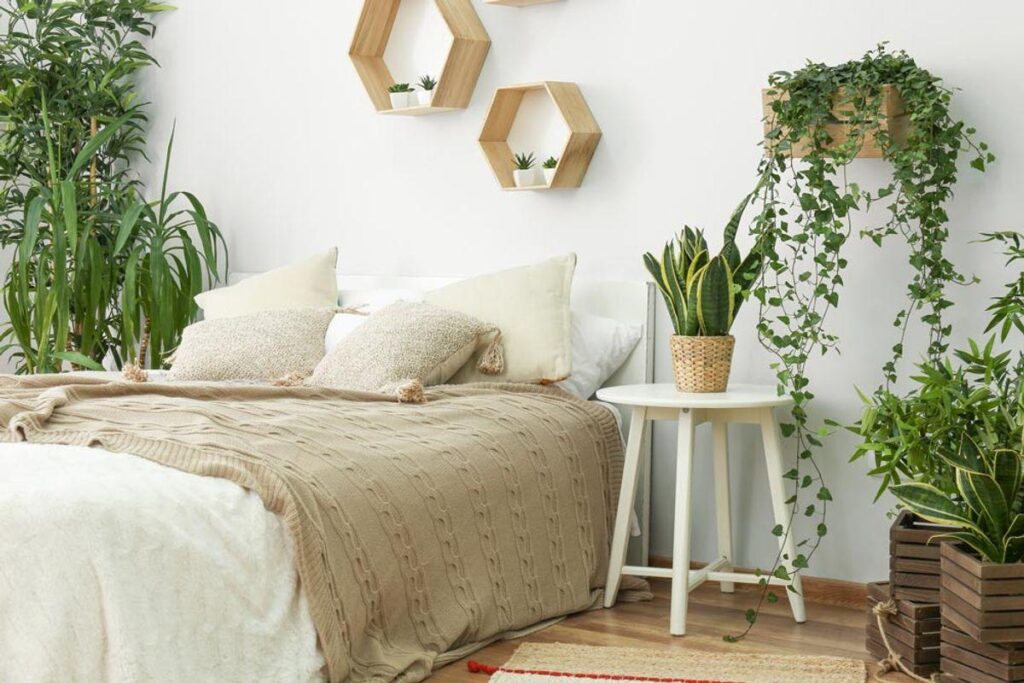
What is your sleep pattern?
Do you have difficulty falling asleep during the night?
Your green friends create a better air climate in your bedroom and generate more oxygen for you. Moreover, their beauty and soothing power help you sleep better.
If you want a healthier night’s sleep, place plants near your bed or on the wall above your bed – a Live Picture Go will look great (and provide some added plant art!)
Conclusion
You spent 85% of your life inside. Simply, this means you considerably spend more time indoors than out.
Often, our homes add to our stress. For example, many people have reported “technostress,” or the anxiety of being closely connected to technology.
A way to counteract the stress of spending so much time inside is by surrounding yourself with indoor plants. Not only does interaction with indoor plants improves your mood, but it also boosts satisfaction and reduces stress.
Your indoor plants go beyond just looking good; they can also make you feel good.
Now, you know the list of benefits that indoor plants have for you. Visit our website and check out some amazing indoor plants for your place.
Related Articles
- Propagating Chinese Elm Bonsai Cuttings And From Seeds
- Best Chinese Elm Bonsai Soil and Fertilizer.
- Troubleshooting Common Problems With Chinese Elm Bonsai
- Buy Chinese Elm Bonsai: How Not to Get Scammed When Purchasing a Chinese Elm Bonsai Tree!
- Chinese Elm Bonsai Pruning And Styling.
- Creating a Chinese Elm Bonsai Forest- Step-By-Step Guide.

